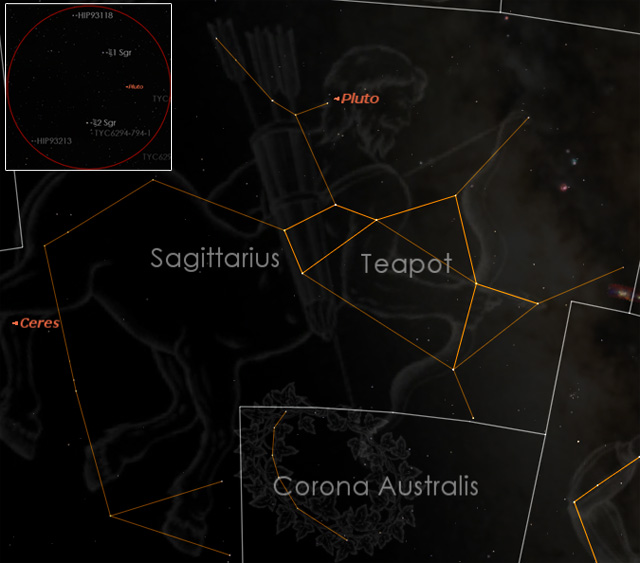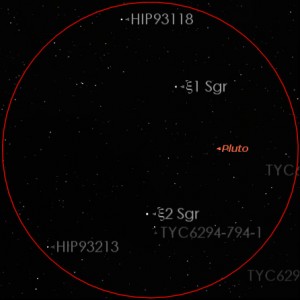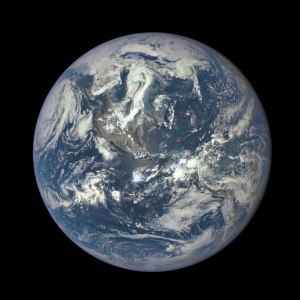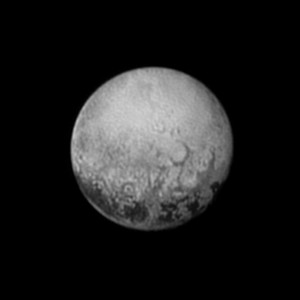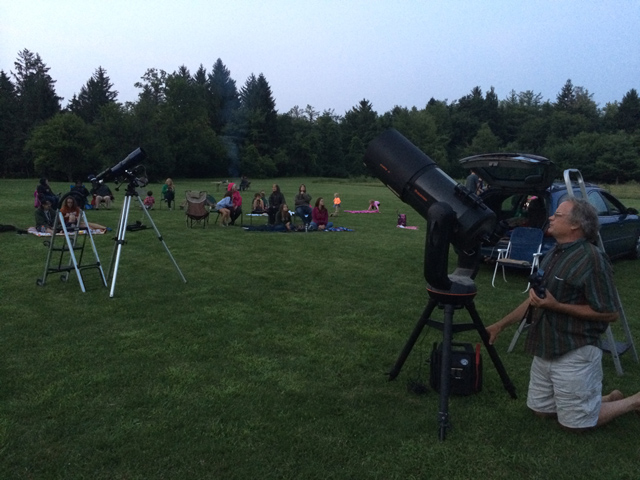Greetings fellow astrophiles,
Poster’s Note: While Tuesday, July 14th marked a momentous occasion in the history of Solar System exploration with the flyby of Pluto and its moon by New Horizons, July 15th marked the release of the first of the closest-approach images to the general public, which some of us think is much more fun! To mark the occasion on the CNYO website, this NASA News Digest contains the four most recent New Horizons updates, finishing with the first of what will be a large number of amazing images from our nearest-farthest neighbor.
The NASA News service provides up-to-date announcements of NASA policy, news events, and space science. A recent selection of space science articles are provided below, including direct links to the full announcements. Those interested in receiving these news announcements directly from NASA can subscribe to their service by sending an email to:
hqnews-request@newsletters.nasa.gov?subject=subscribe
NASA’s New Horizons Spacecraft Stays the Course to Pluto
RELEASE 15-143 (Click here for the full article) – 1 July 2015

NASA’s New Horizons spacecraft is getting a final “all clear” as it speeds closer to its historic July 14 flyby of Pluto and the dwarf planet’s five moons.
After seven weeks of detailed searches for dust clouds, rings, and other potential hazards, the New Horizons team has decided the spacecraft will remain on its original path through the Pluto system instead of making a late course correction to detour around any hazards. Because New Horizons is traveling at 30,800 mph (49,600 kph), a particle as small as a grain of rice could be lethal.
“We’re breathing a collective sigh of relief knowing that the way appears to be clear,” said Jim Green, director of planetary science at NASA. “The science payoff will be richer as we gather data from the optimal flight path, as opposed to having to conduct observations from one of the back-up trajectories.”
Mission scientists have been using the spacecraft’s most powerful telescopic camera, the Long Range Reconnaissance Imager (LORRI), to look for potential hazards, such as small moons, rings, or dust, since mid-May. The decision on whether to keep the spacecraft on its original course or adopt a Safe Haven by Other Trajectory, or “SHBOT” path, had to be made this week since the last opportunity to maneuver New Horizons onto an alternate trajectory is July 4.
“Not finding new moons or rings present is a bit of a scientific surprise to most of us,” said principal investigator Alan Stern of the Southwest Research Institute (SwRI) in Boulder, Colorado. “But as a result, no engine burn is needed to steer clear of potential hazards. We presented these data to NASA for review and received approval to proceed on course and plan. We are ‘go’ for the best of our planned Pluto encounter trajectories.”
…
For more information on the New Horizons mission, including fact sheets, schedules, video and images, visit: www.nasa.gov/newhorizons or solarsystem.nasa.gov/planets/plutotoolkit.cfm
Follow the New Horizons mission on Twitter and use the hashtag #PlutoFlyby to join the conversation. Live updates will be available on the mission Facebook page.
NASA’s Three-Billion-Mile Journey to Pluto Reaches Historic Encounter
RELEASE 15-149 (Click here for the full article) – 14 July 2015
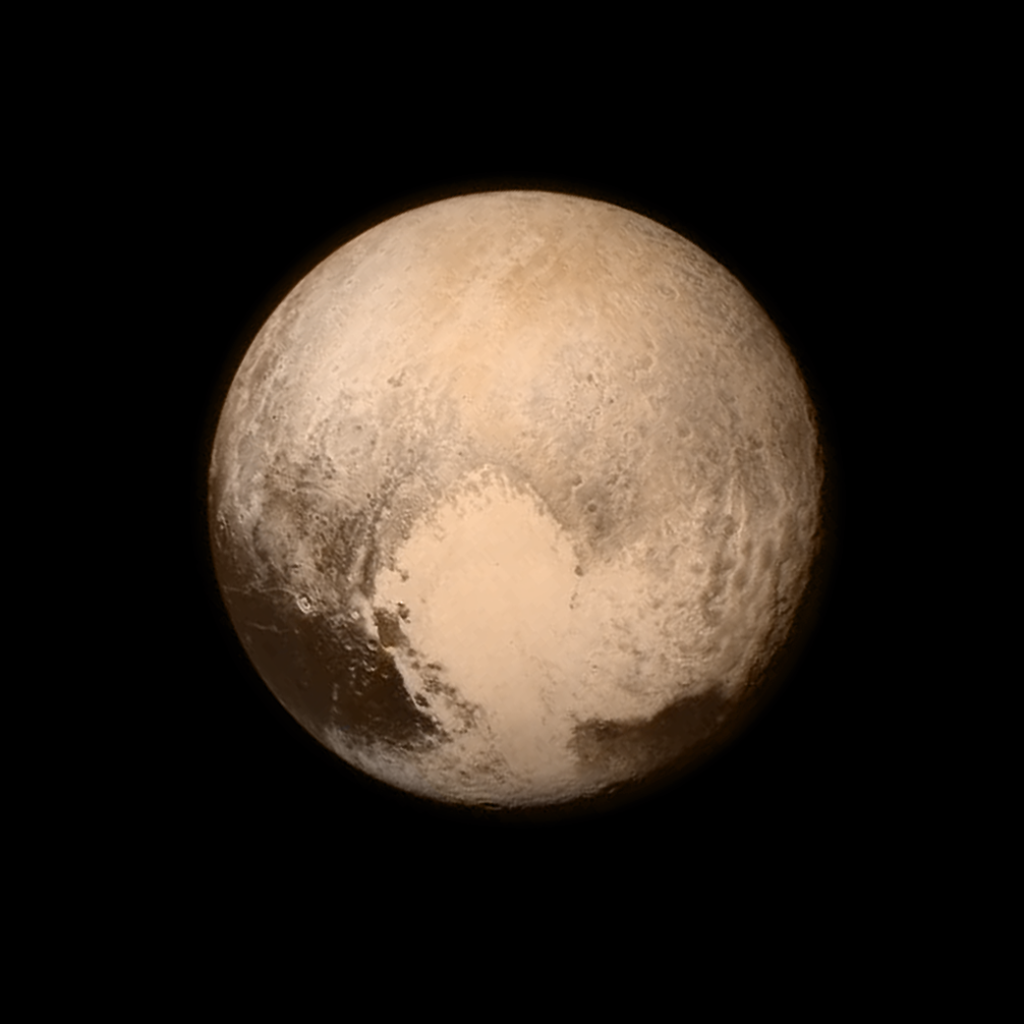
NASA’s New Horizons spacecraft is at Pluto.
After a decade-long journey through our solar system, New Horizons made its closest approach to Pluto Tuesday, about 7,750 miles above the surface — roughly the same distance from New York to Mumbai, India – making it the first-ever space mission to explore a world so far from Earth.
“I’m delighted at this latest accomplishment by NASA, another first that demonstrates once again how the United States leads the world in space,” said John Holdren, assistant to the President for Science and Technology and director of the White House Office of Science and Technology Policy. “New Horizons is the latest in a long line of scientific accomplishments at NASA, including multiple missions orbiting and exploring the surface of Mars in advance of human visits still to come; the remarkable Kepler mission to identify Earth-like planets around stars other than our own; and the DSCOVR satellite that soon will be beaming back images of the whole Earth in near real-time from a vantage point a million miles away. As New Horizons completes its flyby of Pluto and continues deeper into the Kuiper Belt, NASA’s multifaceted journey of discovery continues.”
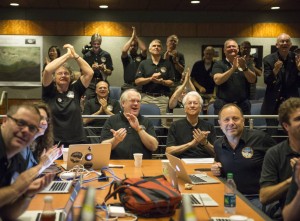
Members of the New Horizons science team react to seeing the spacecraft’s last and sharpest image of Pluto before closest approach later in the day, Tuesday, July 14, 2015 at the Johns Hopkins University Applied Physics Laboratory (APL) in Laurel, Maryland. Photo Credit: (NASA/Bill Ingalls)
“The exploration of Pluto and its moons by New Horizons represents the capstone event to 50 years of planetary exploration by NASA and the United States,” said NASA Administrator Charles Bolden. “Once again we have achieved a historic first. The United States is the first nation to reach Pluto, and with this mission has completed the initial survey of our solar system, a remarkable accomplishment that no other nation can match.”
Per the plan, the spacecraft currently is in data-gathering mode and not in contact with flight controllers at the Johns Hopkins University Applied Physics Laboratory (APL) in Laurel, Maryland. Scientists are waiting to find out whether New Horizons “phones home,” transmitting to Earth a series of status updates that indicate the spacecraft survived the flyby and is in good health. The “call” is expected shortly after 9 p.m. EDT tonight.
…
Follow the New Horizons mission on Twitter and use the hashtag #PlutoFlyby to join the conversation. Live updates also will be available on the mission Facebook page.
For more information on the New Horizons mission, including fact sheets, schedules, video and images, visit: www.nasa.gov/newhorizons and solarsystem.nasa.gov/planets/plutotoolkit.cfm
NASA’s New Horizons ‘Phones Home’ Safe after Pluto Flyby
RELEASE 15-150 (Click here for the full article) – 14 July 2015

New Horizons Flight Controllers celebrate after they received confirmation from the spacecraft that it had successfully completed the flyby of Pluto, Tuesday, July 14, 2015 in the Mission Operations Center (MOC) of the Johns Hopkins University Applied Physics Laboratory (APL), Laurel, Maryland. Photo Credit: (NASA/Bill Ingalls)
The call everyone was waiting for is in. NASA’s New Horizons spacecraft phoned home just before 9 p.m. EDT Tuesday to tell the mission team and the world it had accomplished the historic first-ever flyby of Pluto.
“I know today we’ve inspired a whole new generation of explorers with this great success, and we look forward to the discoveries yet to come,” NASA Administrator Charles Bolden said. “This is a historic win for science and for exploration. We’ve truly, once again raised the bar of human potential.”
The preprogrammed “phone call” — a 15-minute series of status messages beamed back to mission operations at the Johns Hopkins University Applied Physics Laboratory in Maryland through NASA’s Deep Space Network — ended a very suspenseful 21-hour waiting period. New Horizons had been instructed to spend the day gathering the maximum amount of data, and not communicating with Earth until it was beyond the Pluto system.
“With the successful flyby of Pluto we are celebrating the capstone event in a golden age of planetary exploration,” said John Grunsfeld, associate administrator for NASA’s Science Mission Directorate in Washington. “While this historic event is still unfolding –with the most exciting Pluto science still ahead of us — a new era of solar system exploration is just beginning. NASA missions will unravel the mysteries of Mars, Jupiter, Europa and worlds around other suns in the coming years.”
…
Follow the New Horizons mission on Twitter and use the hashtag #PlutoFlyby to join the conversation. Live updates also will be available on the mission Facebook page.
For more information on the New Horizons mission, including fact sheets, schedules, video and images, visit: www.nasa.gov/newhorizons and solarsystem.nasa.gov/planets/plutotoolkit.cfm
From Mountains to Moons: Multiple Discoveries from NASA’s New Horizons Pluto Mission
RELEASE 15-152 (Click here for the full article) – 15 July 2015
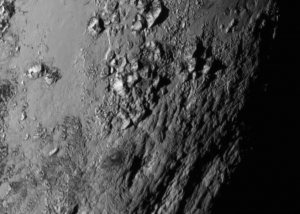
Icy mountains on Pluto and a new, crisp view of its largest moon, Charon, are among the several discoveries announced Wednesday by NASA’s New Horizons team, just one day after the spacecraft’s first ever Pluto flyby.
“Pluto New Horizons is a true mission of exploration showing us why basic scientific research is so important,” said John Grunsfeld, associate administrator for NASA’s Science Mission Directorate in Washington. “The mission has had nine years to build expectations about what we would see during closest approach to Pluto and Charon. Today, we get the first sampling of the scientific treasure collected during those critical moments, and I can tell you it dramatically surpasses those high expectations.”
“Home run!” said Alan Stern, principal investigator for New Horizons at the Southwest Research Institute (SwRI) in Boulder, Colorado. “New Horizons is returning amazing results already. The data look absolutely gorgeous, and Pluto and Charon are just mind blowing.”
A new close-up image of an equatorial region near the base of Pluto’s bright heart-shaped feature shows a mountain range with peaks jutting as high as 11,000 feet (3,500 meters) above the surface of the icy body.
The mountains on Pluto likely formed no more than 100 million years ago — mere youngsters in a 4.56-billion-year-old solar system. This suggests the close-up region, which covers about one percent of Pluto’s surface, may still be geologically active today.
…
Follow the New Horizons mission on Twitter and use the hashtag #PlutoFlyby to join the conversation. Live updates also will be available on the mission Facebook page.
For more information on the New Horizons mission, including fact sheets, schedules, video and all the new images, visit: www.nasa.gov/newhorizons and solarsystem.nasa.gov/planets/plutotoolkit.cfm
